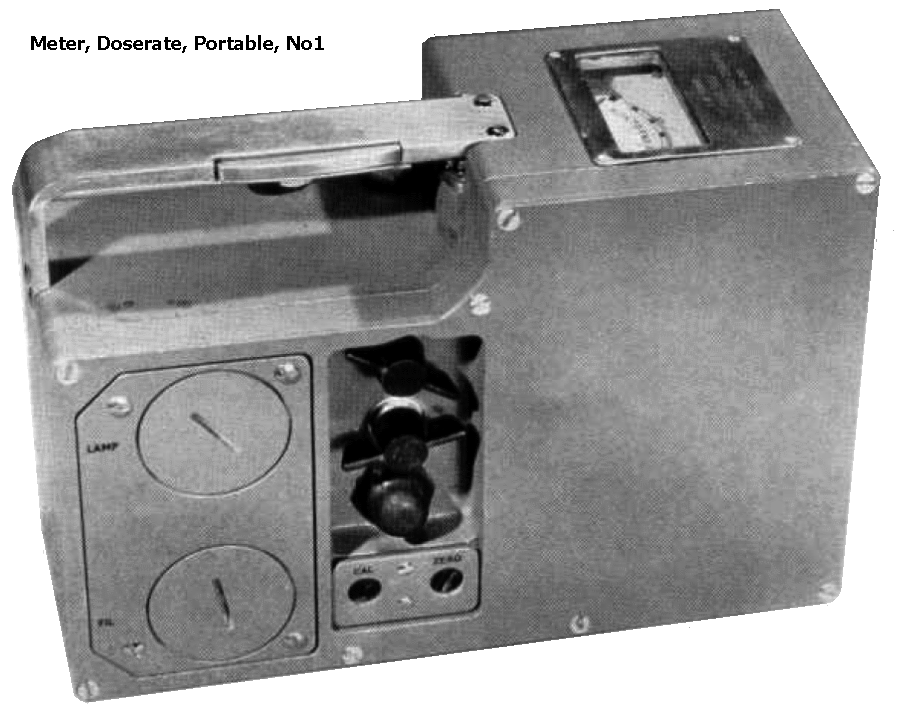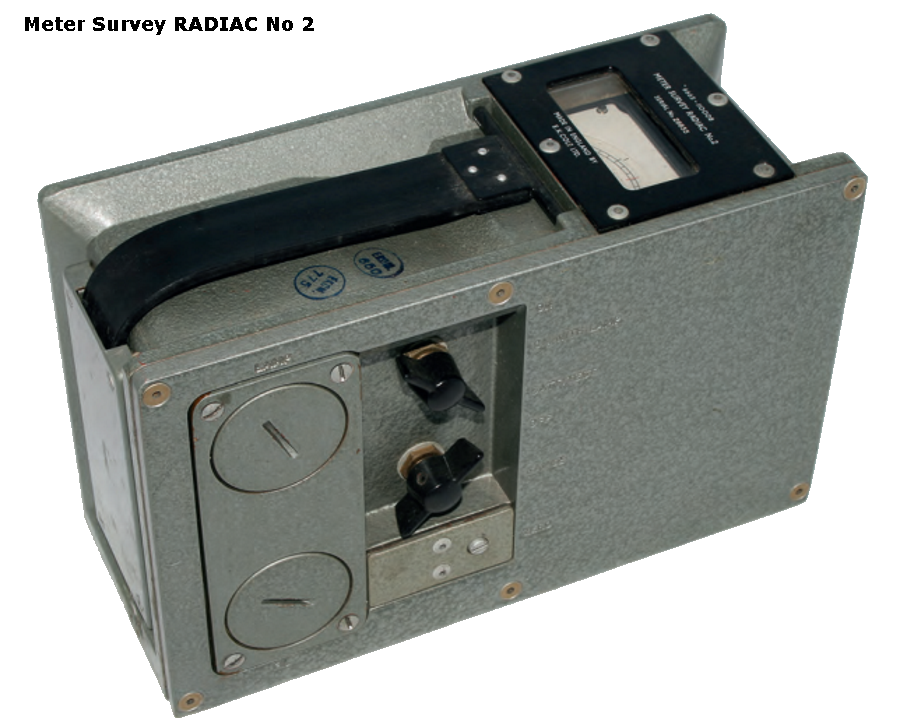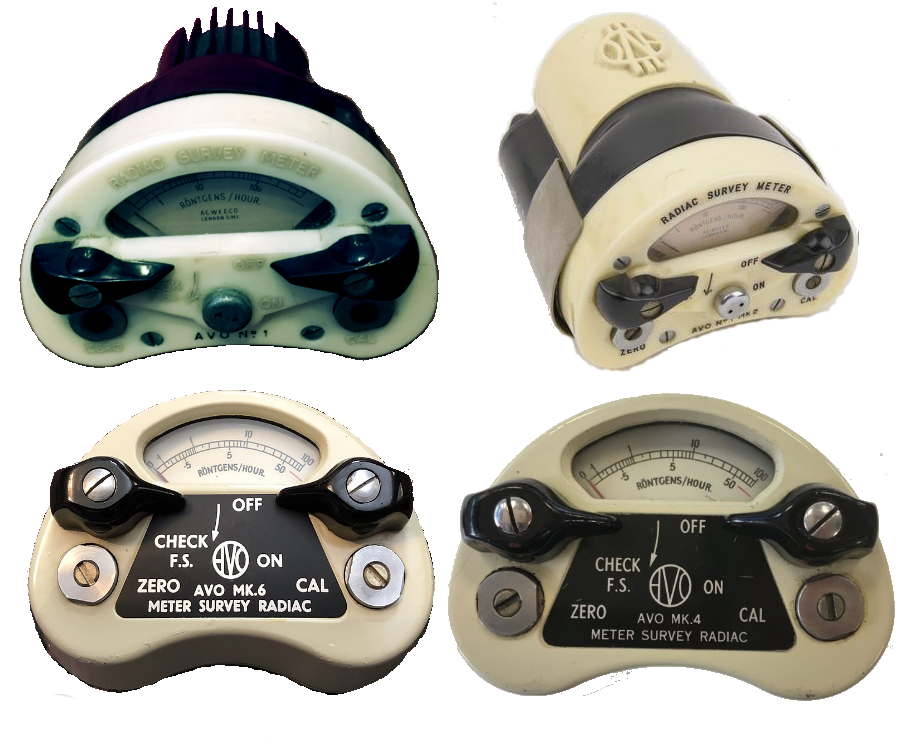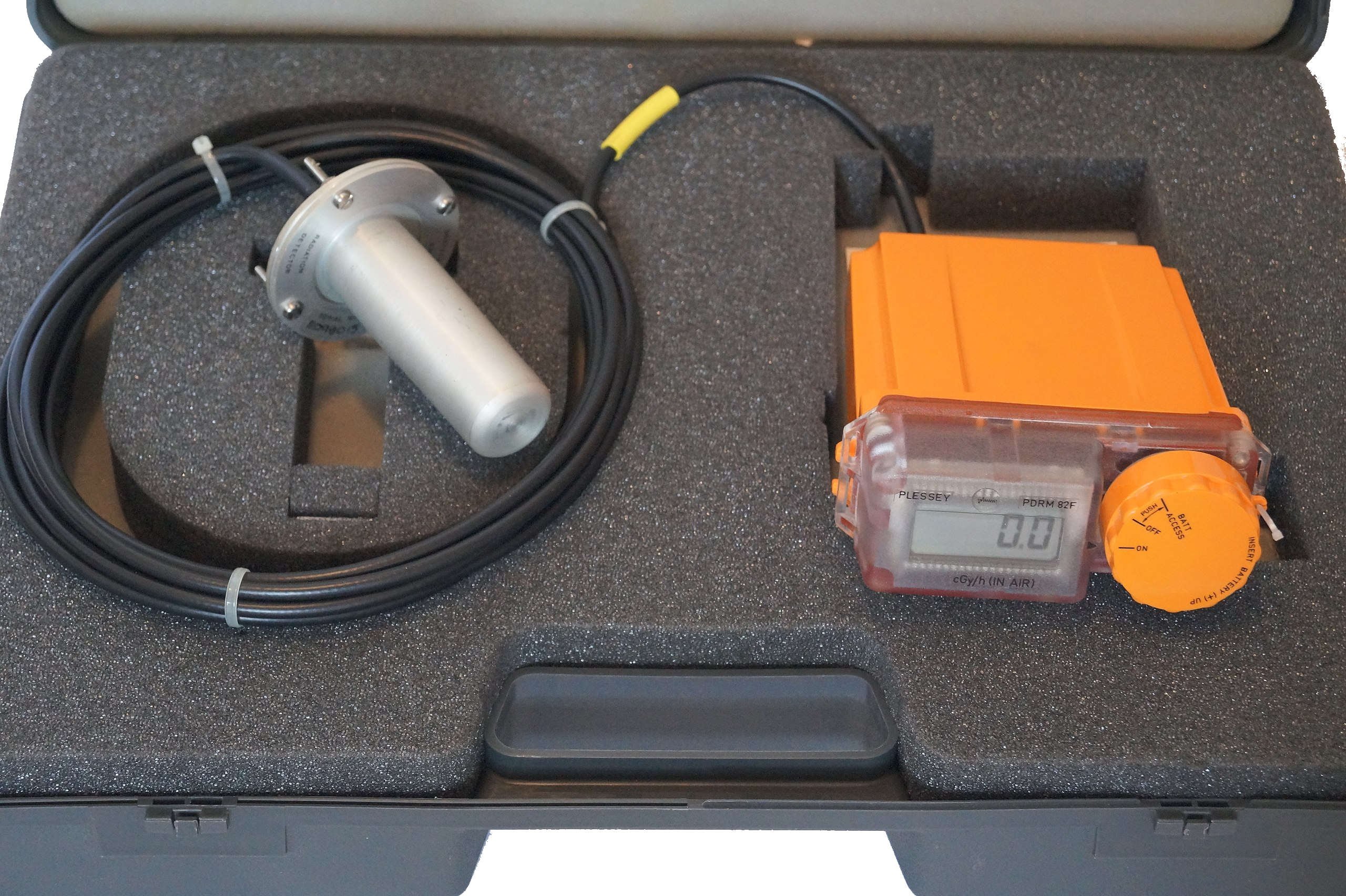
RADIAC Equipment
RADIAC stands for RAdiation Detection, Indication And Computation. All parts of the UK civil defence services, during the Cold War, were required to be able to measure and interpret radiation measurements. As their roles differed somewhat the equipment they used varied a little, and also changed during the Cold War period. A variety of scientific units of measurement were used at different times, often in an imprecise manner, hopefully this page will help to straighten things out.Measuring Radioactivity
Ionizing radiation is measured in terms of:- the strength or radioactivity of the radiation source,
- the energy of the radiation,
- the level of radiation in the environment, and
- the radiation dose or the amount of radiation energy absorbed by the human body.
Ionizing radiation can be measured using units of electron volts, ergs, and joules. The electron-volt (abbreviated eV) is a unit of energy associated with moving electrons around. An electron is 'tightly bound' in a hydrogen atom (one proton and one electron). It takes energy to move this electron away from the proton, in fact it takes 13.6 electron-volts of energy to move this electron completely away from the proton. When that happens we say that the atom is 'ionized'. In the jargon, the 'ionization energy' of the tightly bound electron in hydrogen is 13.6 electron volts.
Electrons have a very small mass, so we don't expect an electron-volt to represent very much energy. One electron-volt is only 1.6 x 10-19 joules of energy, in other words, 0.16 billion-billionth of a joule. One joule (abbreviated J) is equivalent to the amount of energy used by a one-watt light bulb lit for one second. The energy associated with the radioactive decay ranges from thousands to millions of electron-volts per nucleus, which is why the decay of a single nucleus typically leads to a large number of ionizations.















